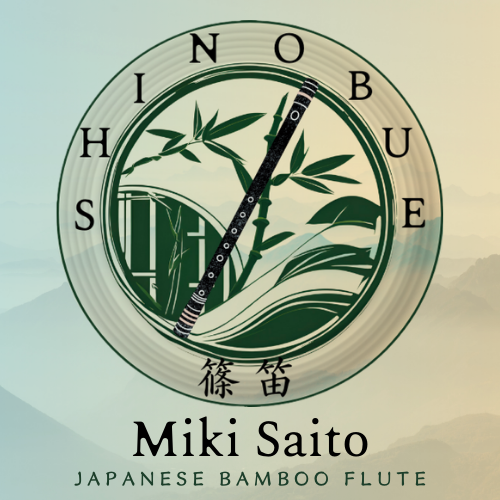How to Read Shinobue Sheet Music - Easy!!!
Power of Shinobue Sheet Music
Learning the shinobue is much easier if you understand shinobue sheet music. Let's dive in and have some fun!
1."Why do I need shinobue sheet music? I learn songs by ear."
It's great that you can learn songs by ear! When I was younger, I used to rely on my ear and didn't enjoy reading music. However, as I started playing more complex music, I realized that playing by ear has its limitations. For instance, you may have to listen to the song repeatedly to get it right, whereas reading music allows you to play the song instantly! Learning to read sheet music for the shinobue will make you an even better musician. I encourage you to give it a try!
2. Use the fingering numbers for your pitches.
You don't need to pay attention to which lines and spaces the notes are on in Western notation (That's great news because that's one less thing you need to learn!) Just use the finger numbers to find the notes. Ryo on notes are indicated by Japanese kanji numbers and kan on notes are indicated by Arabic numerals. To learn how to read Japanese kanji numbers for the ryo on, watch this video.
Just a friendly reminder that even if my sheet music says "6 hon choshi" (for example), you can use ANY hon choshi and still create the same melody by following the fingering numbers. Just keep in mind that the pitches in the Western notation will not match up, but that's usually not a problem unless you are playing to an audio track or another instrument. Happy playing!
3. Use the Western notation only for the rhythm.
Fingering numbers are very helpful for getting the notes (pitches), but they do not indicate precise rhythm. Use Western notation to get the rhythm! You can learn how to read rhythm from instructional videos, such as this one available on YouTube.
4. Don't forget the rests.
Sometimes we get so focused on playing the notes that we forget about the rests. It's important to remember that even when there are rests in the sheet music, we need to keep counting silently and not skip over them. Silence is a crucial part of music!
Soundbrenner is the free metronome app I use.
5. Use your metronome.
Don't forget to make use of a free metronome app every day. It's super helpful for learning the right rhythm, and it's also a great way to practice getting your fingering just right. Remember, the key is to keep those finger strikes crisp and not lazy! We'll dive into this topic more another day. Keep up the good work!
There you have it! Get more sheet music from my website, saitomusic.com/free.
